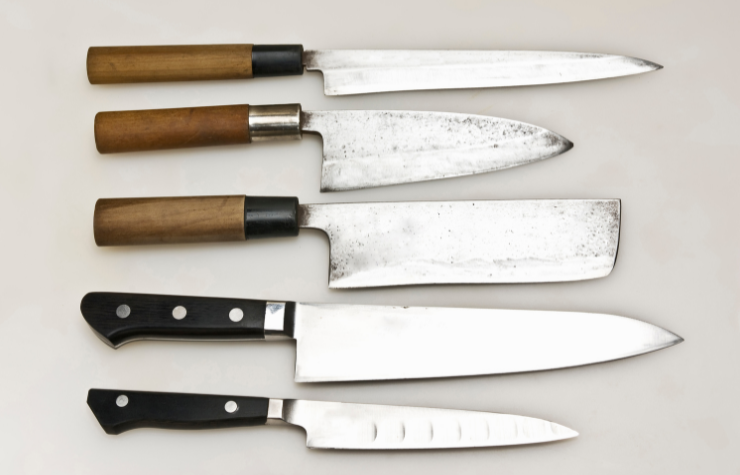Both Japanese and Western knives have their unique characteristics, each born out of different culinary traditions and techniques. Let’s explore their main differences:
- Blade Shape: Japanese knives often have a more diverse range of specialized shapes for specific tasks, such as deba knives for fish butchering or usuba knives for vegetable cutting. Western knives, on the other hand, tend to favor versatility with fewer types that can handle a variety of tasks, like the chef’s knife.
- Edge Angle: Japanese knives typically have a sharper edge angle, usually around 15 degrees or less, allowing for more precise and delicate cuts. Western knives generally have a wider angle, around 20 to 25 degrees, providing more durability for a variety of tasks.
- Bevel: Many traditional Japanese knives are single-beveled, meaning they’re sharpened on one side, which can create a finer edge for precise cuts. Most Western knives are double-beveled, sharpened on both sides, which is more user-friendly and adaptable for different tasks.
- Steel Hardness: Japanese knives often use harder steel, which can hold a sharp edge for longer but can also be more brittle. Western knives usually use softer steel, which is more durable and resistant to chipping, but may require more frequent sharpening.
- Weight: Japanese knives tend to be lighter, which can reduce user fatigue and allow for more intricate work. Western knives are often heavier, which can be beneficial for tasks requiring more force, like cutting through thick vegetables or large pieces of meat.
- Handle: Japanese knives often have a traditional “wa” handle, which is generally cylindrical or octagonal and made from wood, making the knives lighter. Western knives usually feature a heavier, contoured handle, often made of plastic or composite materials, designed for a comfortable grip.
In conclusion, both Japanese and Western knives have their unique strengths and cater to different styles of cooking. The choice between the two often depends on the user’s preference, cooking style, and the type of food they frequently prepare. By understanding these differences, you can choose the best knife that suits your culinary needs.
